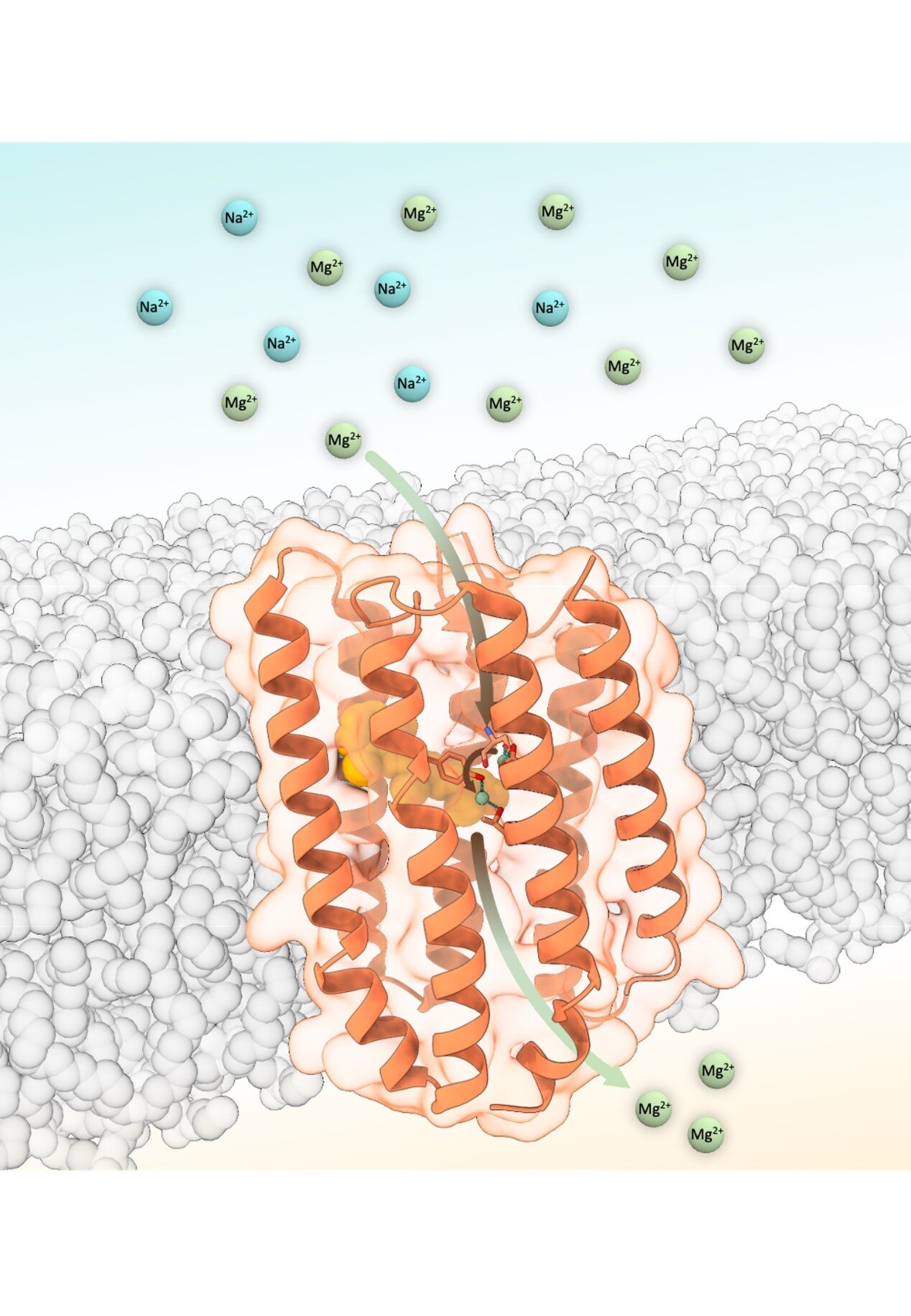Prof. Chii-Shen Yang's team at National Taiwan University resolved the molecular structure and discovered that HwMR, a light-sensing protein in H. walsbyi, transports magnesium ions using key residues, helping microbes survive extreme conditions.
Imagine tiny creatures living in super-salty water with an extremely high concentration of a metal ion, magnesium (Mg2+)—way too much for most other living things. One of these tiny creatures, called Haloquadratum walsbyi, has a special light-sensing protein called HwMR.
In an article published in Nature Communications, the team of Prof. Chii-Shen Yang's lab discovered that HwMR doesn't just detect light—it actually helps move magnesium (Mg2+) ions into the cell when exposed to light. Magnesium is super important for life, but too much can hurt most organisms. Somehow, H. walsbyi survives in this harsh environment, and HwMR might be a big reason why.
To figure out how HwMR works, Yang's team studied its atomic protein structure using a powerful technology, X-ray diffraction.
They found two important residues in the protein—Asp84 and Thr216—that help it grab magnesium and transport it into the cell. They changed Asp84 to another residue to see what would happen, and the protein stopped working properly, proving it plays a big role.
This discovery is exciting because not only is it the first example of Mg2+ transportation across cell membranes that is driven by light, it also shows how some creatures adapt to extreme environments using special proteins.
"It also helps scientists understand how magnesium moves inside cells, which could lead to cool new discoveries in biology," said Prof. Chii-Shen Yang.
More information: Ling-Ning Ko et al, Rhodopsin from Haloquadratum walsbyi is a light-driven magnesium transporter, Nature Communications (2025). DOI: 10.1038/s41467-025-59795-y
Journal information: Nature Communications
Provided by National Taiwan University


